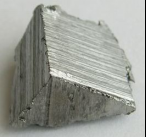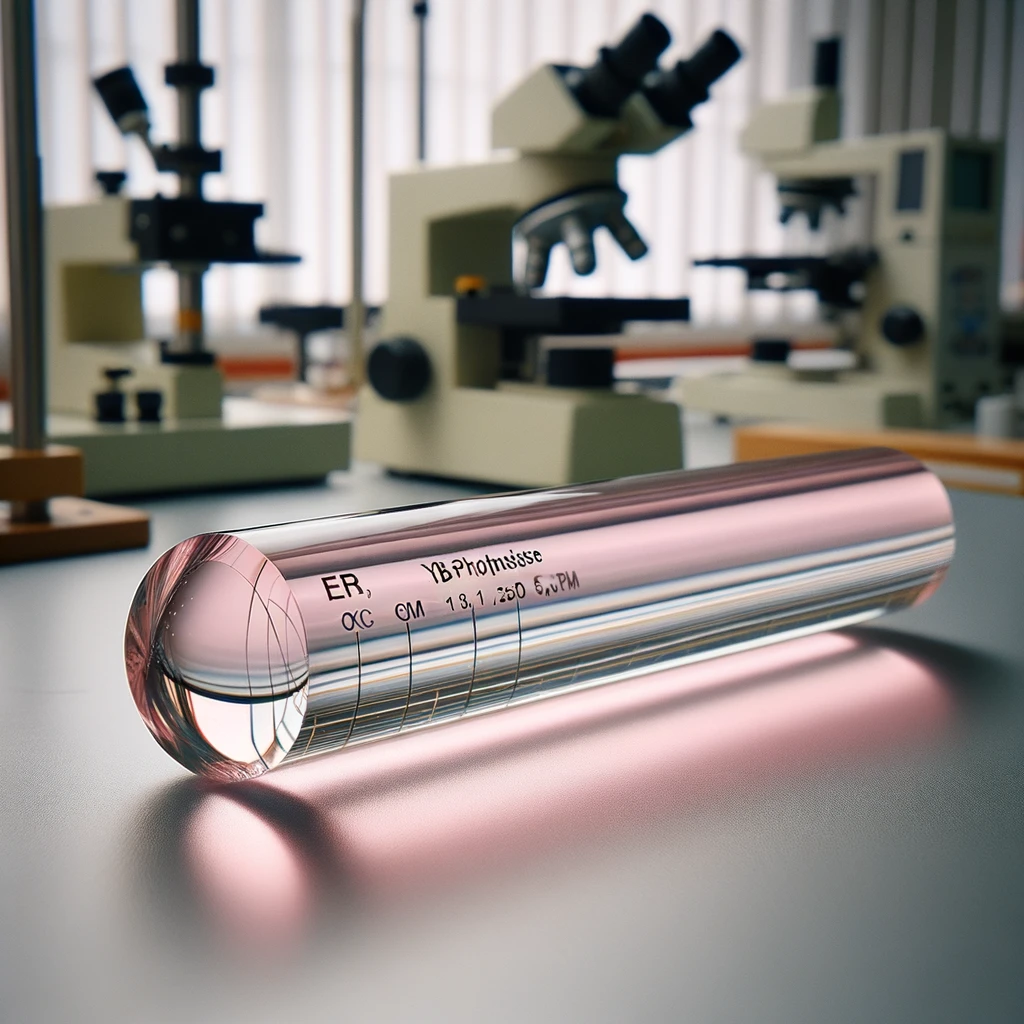In this article, we will show the FAQ about the effect, performance, limitation and application about erbium doped glass laser (er glass laser) ,as well as the brief definition of erbium, er glass, and er glass laser.
We also wrote a specific description related to erbium doped glass laser, here is the link: What is Erbium-doped Glass Laser?Definition,features, application……
Definition of Erbium, Er Glass , and Er glass laser (erbium doped glass laser)
Erbium:
Erbium is a rare earth element with the symbol "Er" and atomic number 68. It is a silvery-white, soft metal that is part of the lanthanide series of the periodic table. Erbium is commonly used in the production of amplifiers for fiber-optic communication systems due to its ability to amplify light signals.

Keywords of Features: Trivalent state,Magnetic properties,Photoluminescence,Electron configuration,High melting point,Paramagnetic,Crystal lattice
Er:Glass:
Erbium-Ytterbium-doped phosphate glass (Er, Yb:phosphate glass) is a type of laser glass that is co-doped with erbium (Er) and ytterbium (Yb) ions. The ytterbium ions absorb pump light efficiently and transfer energy to the erbium ions, which then emit light, typically in the infrared region around 1.54 micrometers. This material is often used in laser applications due to its high optical quality, good thermal properties, and ability to produce high-power laser output.

Keywords of Features: High transparency,Low dispersion,Thermal stability,Homogeneous distribution,Refractive index,Non-linear optics,Photonics applications
Er:Glass Laser:
An Er:Glass laser is a solid-state laser that uses Er:Glass as its active medium. It typically emits infrared light at a wavelength of 1.54 micrometers. Due to this specific wavelength, Er:Glass lasers are widely used in medical treatments, such as skin resurfacing and wrinkle reduction, as the emitted light is readily absorbed by water in human tissue. Additionally, its eye-safe properties make it suitable for various other applications, including laser ranging and targeting.

Erbium doped glass from Lumispot Tech
Keywords of Features:Pulsed operation,Continuous wave (CW),High peak power,Tunable output,Beam quality,Long coherence length,Efficient energy conversion
What is an Er:Glass laser?
An Er:Glass laser is a solid-state laser that uses erbium-doped glass as its active medium, emitting light typically at a wavelength of 1.54 micrometers.
How are Er:Glass lasers used in laser ranging?
Er:Glass lasers can be used for long-distance ranging, especially in atmospheric conditions where this wavelength experiences minimal scattering and absorption. This is supported by the study on the control system of a 53 cm binocular laser ranging telescope for tracking space targets[1].
Why are Er:Glass lasers preferred for targeting applications?
The 1.54 micrometer wavelength of Er:Glass lasers is eye-safe, making them suitable for targeting applications without posing a risk to human eyes. Research on laser-powered UAVs for wireless communication coverage also highlights the importance of laser technologies in targeting[2].
Can Er:Glass lasers be used for underwater communication?
Yes, laser-induced acoustic (LIA) technology, as discussed in a study, is a potential method for communication from an air-based platform to underwater targets[3].
What advantages do Er:Glass lasers offer in communication systems?
Er:Glass lasers can be used in free-space optical communication due to their ability to transmit over long distances with minimal atmospheric interference. This is evident from the research on laser-powered drones and their potential in establishing line-of-sight (LOS) links[2].
How do Er:Glass lasers compare to other lasers in terms of range and accuracy?
While the specific range and accuracy depend on the system's design, Er:Glass lasers generally offer long-range capabilities with high precision. This is supported by the study on obstacle avoidance using buffered voronoi cells based on local information from a laser range scanner[4].
Are there any limitations to using Er:Glass lasers in targeting and ranging?
While Er:Glass lasers offer many advantages, system design, atmospheric conditions, and target reflectivity can influence their performance. Research on laser ranging for tracking space debris in low earth orbits highlights some of these challenges[5].
How do environmental factors affect the performance of Er:Glass lasers in communication?
Fog, rain, and other atmospheric conditions can impact the transmission of the laser beam. However, the 1.54 micrometer wavelength of Er:Glass lasers is less affected compared to other wavelengths[2].
Are Er:Glass lasers safe for use in populated areas?
Yes, one of the advantages of Er:Glass lasers is that their wavelength is considered eye-safe, reducing the risk when used in areas with potential human exposure.
What future developments can we expect in the field of Er:Glass lasers for communication and targeting?
As technology advances, we can expect more compact systems, increased range and accuracy, and integration with other technologies for enhanced performance in communication, ranging, and targeting applications. This is supported by the research on GaN laser diodes for quantum sensing, optical atomic clocks, and precision metrology[6].
References:
Lahmeri, M.-A., Kishk, M. A., & Alouini, M.-S. (2022). Laser-Powered UAVs for Wireless Communication Coverage: A Large-Scale Deployment Strategy. IEEE Transactions on Wireless Communications.
Zhao, Y., Li, P., Zhang, P., Zhou, Z., & Li, J. (2021). Application of laser-induced acoustic method on air-underwater communication. IEEE.
Huang, T. (n.d.). Design and implementation for control system of 53 cm binocular laser ranging telescope.
Motonaka, K., & Miyoshi, S. (2022). Obstacle avoidance using buffered voronoi cells based on local information from a laser range scanner. Advanced Robotics.
Blanchet, G., Haag, H., Hennegrave, L., Assemat, F., Vial, S., & Samain, E. (2013). Laser Ranging for Effective and Accurate Tracking of Space Debris in Low Earth Orbits.
Najda, S., Perlin, P., Suski, T., Stanczyk, S., Leszczynski, M., Schiavon, D., ... & Haji, M. (2022). GaN laser diodes for quantum sensing, optical atomic clocks, and precision metrology. SPIE.
Disclaimer:
We hereby declare that certain images displayed on our website are collected from the internet and Wikipedia for the purposes of furthering education and sharing information. We respect the intellectual property rights of all original creators. These images are used with no intention of commercial gain.
If you believe that any content used infringes upon your copyrights, please contact us. We are more than willing to take appropriate measures, including removing the images or providing proper attribution, to ensure compliance with intellectual property laws and regulations. Our aim is to maintain a platform that is rich in content, fair, and respectful of others' intellectual property rights.
Please reach out to us via the following contact method, email: sales@lumispot.cn. We commit to taking immediate action upon receipt of any notification and ensure 100% cooperation in resolving any such issues.
Contact: Lumispot
Phone: +86-15072320922
Tel: +86-510-87381808
Email: sales@lumispot.cn
Add: Bldg 4 No.99 Fu Rong 3rd Road, Wuxi, China